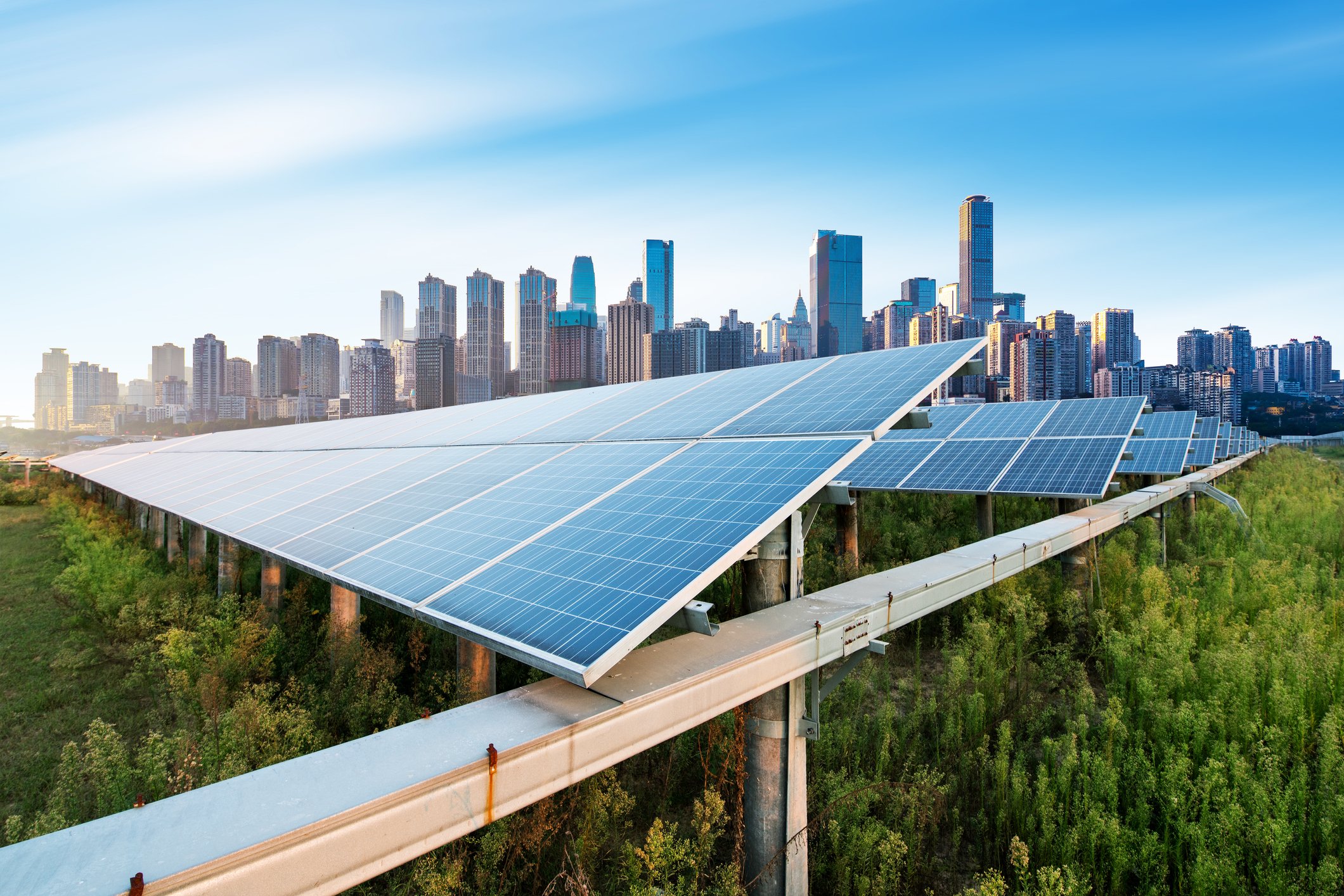
The dominion of the fossil fuel economy is largely to blame for climate change, but we hone our focus on this lone contributor to the planetary crisis at our own peril. While the need to transition to a renewable energy grid is of the utmost urgency, there are many other critical factors at play that must also be confronted yet often go unmentioned in the public discourse. Among the most significant of these factors are the cities that the majority of us call home.
Research conducted by the United Nations has shown that cities consume 78% of the world’s energy while also generating more than 60% of total greenhouse gases. Indeed, a recent study revealed that 20% of the globe’s total carbon dioxide output comes from just 100 out of 13,000 cities analyzed. The bulk of these emissions can be traced back to poor urban planning, the inevitable result of designing our cities for cars instead of human beings. If we do nothing, the threats posed by rapid urbanization will only grow more tremendous in the years to come. Right now, more than half of the Earth’s human population lives in cities. By 2050, that number is expected to climb as high as 70%, with an estimated 2.5 billion additional city dwellers contributing even more emissions to the already massive carbon footprint produced by modern urbanization.
So, what do we do? This is the trillion-dollar question. One possible answer is that we must dramatically change how we imagine, design, create, and operate the urban environments of tomorrow. If we wish to survive and thrive on our changing planet, we must build sustainable cities.
Green Cities Definition: What Is a Sustainable City?
A sustainable city—also referred to as a “green city” or an “eco-city”—is an urban enclave whose design, construction, and operation prioritizes the preservation of the natural world alongside the economic, social, and physical health and wellness of the city’s inhabitants.
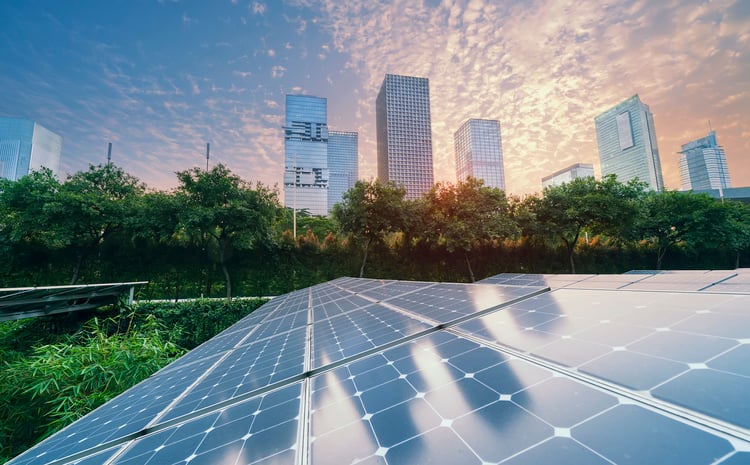
Sustainable cities take the long view by minimizing damage to local ecologies and creating compact resilient urban spaces that will provide shelter for many generations to come. Issues of land use, biodiversity, conservation, as well as the cleanliness of air and water are carefully considered in sustainable cities, which also aim to foster connections between people and strengthen communities through intentional urban design.
In the context of climate change, sustainable cities must also be able to adapt to a changing planet and withstand extreme weather events like floods, wildfires, and hurricanes. This will likely come as no surprise, but keep in mind, most modern cities are not sustainable. Not by a long shot.
If green cities can be characterized by verticality, compactness, high density, walkability, mixed economies, robust public transit networks, and environmental protection, then the majority of modern cities embody the exact opposites of these traits. Heedlessly bulldozing and paving over precious ecosystems, today’s cities and the many headed hydra of low-density suburbs that sprawl ever outward from their centers are wasteful, inefficient, and destructive to the natural world. Built for cars rather than pedestrians, the slum ridden megalopolises of the modern era are impenetrable labyrinths of financial and commercial districts that silo off communities, isolate neighbors from neighbor, and cut us off from nature.
Explore more Sustainable Construction Examples!
Green City Concept: What Would a Sustainable City Look Like?
Now imagine a city interwoven with lush greenery. Community gardens blanket the rooftops and line the thoroughfares. Getting around is simply a matter of opening your front door and starting to walk. Open air plazas merge into the streets, broad bustling avenues teeming with pedestrians and bicyclists.
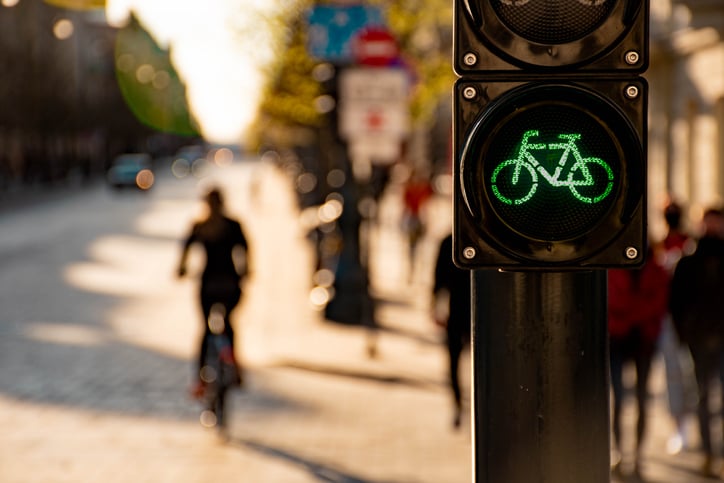
Gone are the choking fumes and gridlock of endless vehicular traffic. Automobiles aren’t allowed within this city’s limits, or if they are, they’re restricted to only certain areas. Banning cars might sound outlandish, impossible even, but it’s already a reality in parts of London. One vibrant neighborhood blends into the next, all accessible by foot, bike path, or trolley.
All the buildings are LEED certified and many are made almost entirely out of recycled plastics, green concrete, or even locally sourced and renewably harvested wood. All of the city’s energy comes from zero emission renewable sources. Geothermal heat pumps supply hot and cold air. High rises draw power from turbines that cap their roofs or spin industriously in offshore wind farms visible in the distance. Maybe some of the skyscrapers are clad entirely with solar panels, like the Copenhagen International School in that city’s Nordhavn district.
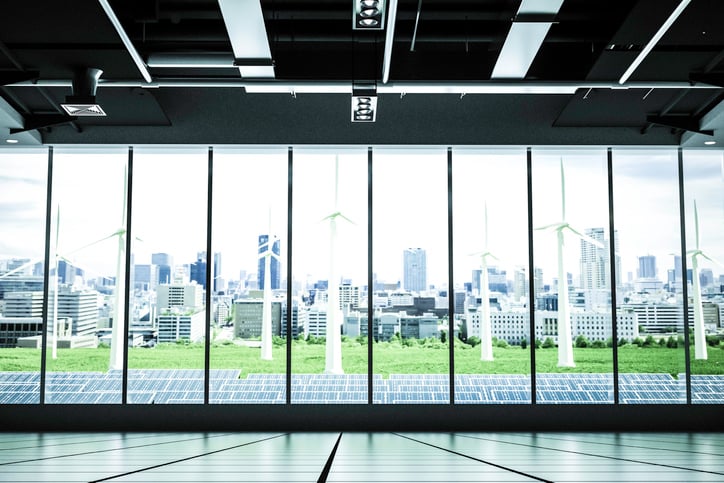
If you want to travel a long distance or leave the city for a neighboring region, just take a stroll down to one of the many public transit nodes and hop on a high-speed rail that will carry you through the verdant forests, prairies, wetlands, and agrarian pastures that surrounds your metropolitan home. When you arrive at your destination, you simply get up and keep walking to wherever your feet will carry you.
Why Should We Build Sustainable Cities?
In this light, eco-cities may sound like wistful yet unrealistic utopias akin to the environmentalist megastructures of a bygone architectural era. Not so to California based architect and leading New Urbanist thinker Peter Calthorpe. In his view, sustainable cities are not only attainable—they’re critical to our survival.
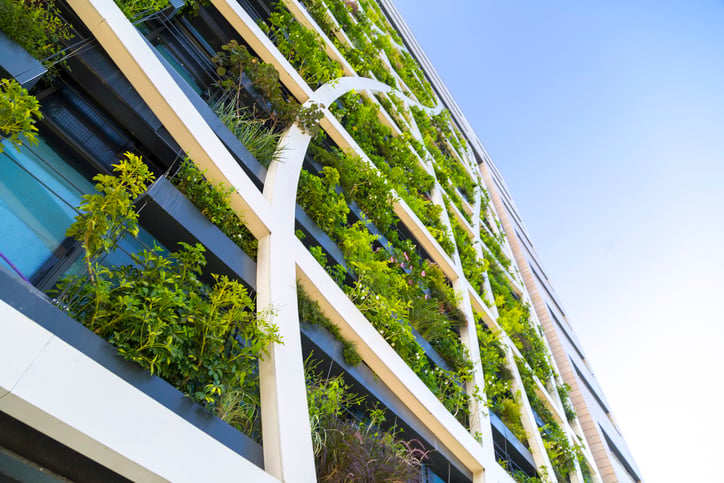
“If we don’t get [sustainable cities] right,” Calthorpe said at a TED Talk in 2017, “I’m not sure all the climate solutions in the world are going to save mankind.”
In his book Urbanism in the Age of Climate Change, Calthorpe lays out a compelling road map for how we can harness our cities to combat global warming and make life better for the people who live, work, and play within their boundaries.
Sustainable City Benefits
Before we dive into what steps we can take to get us closer to a greener urban future, let’s take a closer look at some of the arguments for why we should take this idea seriously.
Environmental
The primary driver behind sustainable cities is the need to protect the natural world and us along with it. Events like the out-of-control wildfires in California in recent years have laid bare the destructive toll exacted by our industrialized and urban way of life. The Intergovernmental Panel on Climate Change’s latest report makes clear that unless we take dramatic action within the next few years, the environmental damage will worsen beyond repair and vast swathes of the planet will become inhospitable to any form of life for hundreds, if not thousands of years. We need to do everything we can to avoid this outcome. If we build and retrofit cities to conserve landmass, draw power from renewable energy, and limit the use of automobiles, that alone could put a serious dent in carbon emissions and set us on a better, more sustainable path.
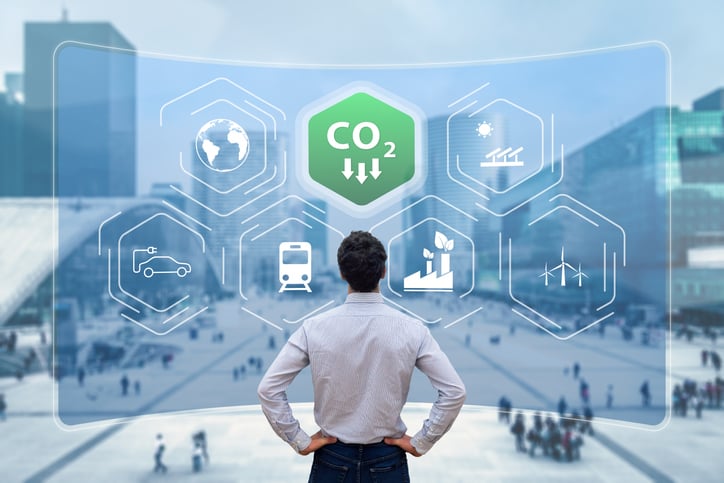
Community
Sustainable cities call for compactness and mindful upward construction on a smaller footprint so as to lessen the impact on surrounding ecosystems. Bringing “destinations closer together,” Calthorpe writes in his book, “is a simpler, more elegant solution than assembling a new fleet of electric cars and the acres of solar collectors needed to power them.” This design choice is driven just as much by social factors as it is by environmental ones. The New Urbanism approach to sustainability calls for the creation of walkable mixed-income neighborhoods seamlessly intermingled with local shopping and open public spaces. These kinds of “human-scale” communities promote mobility, social interaction, interconnectivity, and enhance the urban landscape with pockets of unique character and flavor. In this way, sustainable cities aren’t only more environmentally friendly. They’re also more people friendly.
Mental and Physical Health
Strong eco-friendly communities bring with them increased mental and physical wellbeing. It’s well known by now that people want to live in walkable cities, with more landscape and amenities accessible by foot or by bike. Sustainable cities are inherently more walkable due to the environmental and community-centric principles at their core. A recent survey showed that of those who identify their community as walkable, 57% described their quality of life as “high.” People who live in walkable cities also get more daily exercise and therefore experience a higher degree of cardiovascular health. Increased walkability requires fewer vehicles on the road, which means less pollution, which means cleaner, more breathable air. Sustainable cities also encourage interconnectivity. Research shows that people who feel more connected to each other experience lower rates of anxiety and depression.
By contrast, living in today’s poorly designed cities is associated with a nearly 40% increase in mood disorders and a more than 20% increase in anxiety disorders, which doubles the risk of schizophrenia and substance abuse. However, a growing body of science has revealed that access to nature can transform this negative dynamic into a positive one. Recent studies have shown that people who spend as little as two hours in nature a week report higher levels of wellbeing compared to those who don’t. Sustainable cities can solve for this pressing need by opening up and permeating the urban environment with the natural one in the form of waterfronts, parks, trails, and untouched swaths of greenery.
Characteristics of Sustainable Cities: The Role of Nature
Sustainable cities not only preserve nature; they also draw strength from it. We’ve already touched on how access to nature can improve the wellbeing of a city’s inhabitants. Now let’s take a look at just a few of the other ways that nature can improve life in the city.
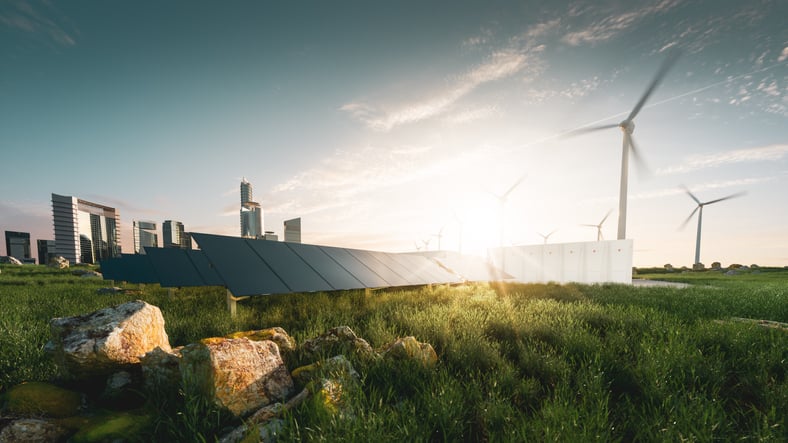
Heat reduction
In the summer months, cities transform into concrete ovens thick with punishing heat. Depending on the city, temperatures can be anywhere between 1 to 7 degrees hotter in the daytime and 2 to 5 degrees hotter at night. According to the Environmental Protection Agency, these so-called “urban heat islands” are a result of a number of factors, including population density and the concentration of surface materials that absorb and magnify heat like steel, glass, and concrete. This problem is only going to worsen as we stare down a global temperature increase of more than 1.5 degrees celsius in the years ahead. One way to beat the heat is to grow tree canopies into the urban framework. It may sound basic to our tech-oriented mindsets but something as simple as the shade from trees is enormously beneficial. In fact, research has shown that shaded areas can be 20 to 45 degrees cooler than unshaded ones. What’s more, shade from trees can also reduce air conditioning—itself a major cause of climate change—by 20 to 30%. This not only translates to dollars pinched and emissions reduced but lives saved as well. Globally, extreme heat kills millions of people every year. We can drive that number and the overall temperature down by building sustainable cities in the shade.
Food production
It’s an axiom in the American mindset that food comes from farms in rural places. But global food insecurity has forced a tectonic shift in the last several decades. One of the most striking results is the so-called “agrihood” (agricultural neighborhood). These are pockets in the urban and suburban environment where communities are organized around the cultivation of fresh fruits and vegetables. Detroit, Michigan has emerged at the forefront of this movement, describing itself as the nation’s “first sustainable urban agrihood.” The more than 1,400 urban farms and community gardens within the city’s borders have grown upward of 400,000 pounds of fresh produce in some years, much of it available for free to city residents. This model can and should be replicated in the sustainable cities of tomorrow.
Flood mitigation and water quality
Climate change is bringing with it a wide range of extreme weather events. While some areas will be choked by drought, others will be drowned in rain. Floods have grown more and more disastrous in recent years. A typical response seen in cities is to shore up vulnerable edifices and downtown waterfronts with concrete retaining walls. While these solutions are necessary, they are incomplete and overlook a critical ally: nature itself. Areas with healthy grasslands and wetlands are better protected from floods. These areas absorb stormwater and help clean it of pollutants. By preserving wetlands on the periphery, cities protect a vital ecosystem while also shielding themselves from the catastrophic effects of rising waters. Research by the Iowa Flood Center shows that prairies create stronger, more porous soil with an increased water storage capacity. By converting 10% of agricultural land to prairie, we can reduce surface water runoff by as much as 40%. This strategy need not only apply to agricultural landscapes, however. Within the sustainable city, blighted lands and brownfields could be seeded with native flowers and prairie grasses that enrich the soil and create a buffer against floods.
The Future of Sustainable Cities
The future of sustainable cities depends entirely on how serious we are in confronting the threats of climate change and living in renewed harmony with the Earth. There are reasons to be optimistic. The United Nations and, perhaps more significantly the World Bank, have highlighted sustainable development as a key priority in recent years. Furthermore, many cities, states, and nations are taking the initiative.
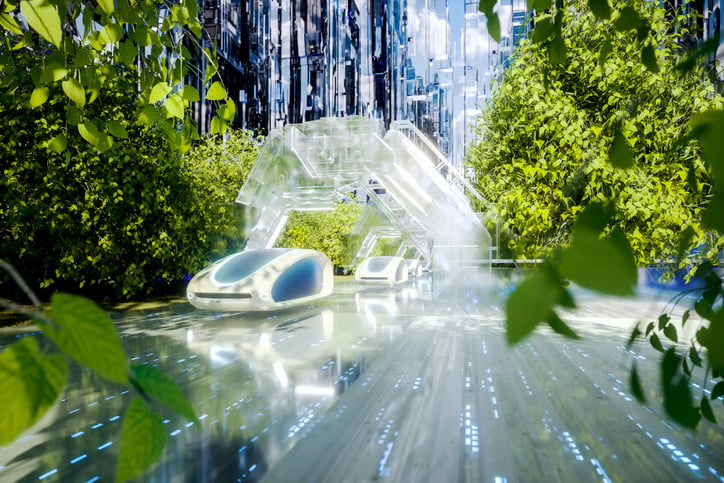
China is at the head of the pack. The government there now requires that 50% of all urban buildings adhere to strict standards of sustainability. The nation is currently in the process of designing and building an astonishing 285 eco-cities. Moreover, Chinese developers have embraced a variety of stunning concepts such as “Forest City,” an Edenic acropolis where all the buildings are covered in living plantlife. This isn’t just a wild dream. It’s already under construction in Liuzhou, Guangxi Province. Designed by architect Stefano Boeri Architetti, “Forest City” will run on renewable energy and absorb roughly 10,000 tons of carbon dioxide per year.
For his part, Calthorpe encourages urban planners everywhere to think beyond individual cities and begin designing entire regions with sustainability in mind. It is not enough, Calthorpe contends, to design green downtowns or eco-friendly business parks. We must adopt a coherent strategy that integrates every form of human habitation into a greener, more tightly knit, and transit-oriented whole.
“For the planet to thrive,” Calthorpe writes, “the old patterns of growth built on the industrial principles of centralization, specialization, and standardization will have to evolve into new forms—forms that will replace modern architecture’s symbolic gestures and trendy styles with purposeful designs that honor a place’s climate, ecology, and history, and urban design that will replace short-term market forces with long-term stability.”